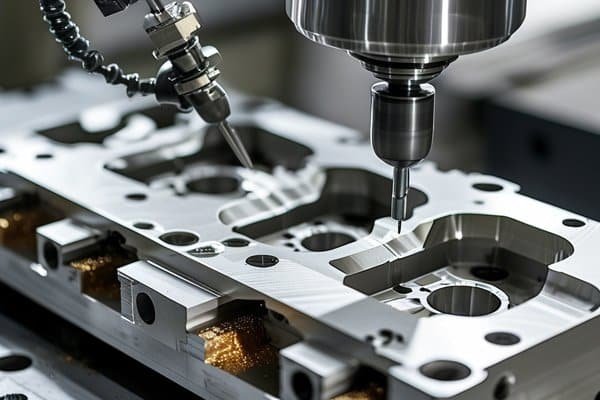Opening:
Did you know that nearly 20% of products fail quality inspections in manufacturing sectors, resulting in significant financial losses? In the competitive world of CNC (Computer Numerical Control) machining, ensuring that every component meets stringent quality standards is not just advantageous—it’s crucial. But how can manufacturers elevate their quality control processes to avoid costly errors and maintain customer satisfaction? Let’s delve into the essential considerations for implementing effective quality control processes in CNC machining.
—
Quality control (QC) is a systematic approach to ensuring that products meet predefined standards and specifications. In the context of CNC machining, where precision and accuracy are paramount, efficient QC processes can help guarantee that every manufactured part functions as intended. Let’s explore the critical points to consider when implementing QC strategies in CNC machining.
Before any QC process can take shape, manufacturers must establish clear and detailed quality standards. This includes defining acceptable tolerances, surface finishes, material properties, and testing protocols. This information should be documented and provided to all relevant stakeholders to ensure everyone is aligned with the quality expectations.
Solution:
Utilize industry standards such as ISO 9001, AS9100, or specific customer requirements. Create a comprehensive quality assurance manual that outlines tolerances and standards, and ensure that all team members have access to it.
Measurement is a cornerstone of quality control in CNC machining. Without accurate measurement tools, even the best processes can yield defective products. Tools such as Coordinate Measuring Machines (CMMs), laser scanning devices, and optical comparators can help ensure that parts are manufactured within the specified tolerances.
Solution:
Invest in a blend of traditional and advanced measuring technologies. Ensure that the team is trained on how to effectively use these tools for inspections. Regular calibration and maintenance of these devices will also enhance their reliability.
Statistical Process Control (SPC) is a data-driven approach that uses statistical methods to monitor and control production processes. This technique allows manufacturers to identify variations and trends, enabling them to take corrective actions before defects occur.
Solution:
Develop control charts that track key performance indicators (KPIs) in real-time. Regularly analyze data to identify trends and variations—this information can be invaluable for predictive maintenance and process adjustments.
No quality control process will be effective without a skilled workforce that understands the importance of quality standards. Employees engaged in CNC machining must be proficient in operating machines, conducting inspections, and recognizing quality issues.
Solution:
Implement a robust training program that encompasses quality assurance principles. Schedule ongoing training sessions and workshops to keep your team informed about the latest QC methods and technological advancements.
Creating a culture that prioritizes quality starts from the top down. If leadership emphasizes the importance of quality, workers at all levels will be more likely to take ownership of their work output and adhere to quality processes.
Solution:
Develop company-wide initiatives that reward adherence to quality standards and highlight success stories related to quality improvements. Regularly communicate the role of quality in the company’s success to all employees.
Quality control is not a one-time effort; it must be an ongoing process. Establishing feedback loops helps manufacturers adapt and optimize their QC practices based on real-world data and experiences.
Solution:
Encourage regular feedback from team members regarding quality processes. Conduct post-mortem analyses when defects occur to identify root causes and areas for improvement. Implement an iterative process for refining QC practices.

Digital technologies and automated systems can greatly enhance quality control processes. Using software for tracking production processes and defects can improve accuracy and efficiency in detecting quality issues.
Solution:
Invest in Quality Management Software (QMS) that tracks defects, facilitates documentation, and generates reports on quality metrics. Implement automation to reduce human error in inspections and maintain consistency.
Regular internal audits can reveal gaps in the quality control processes and ensure compliance with established standards. Audits should include an evaluation of both the manufacturing processes and the effectiveness of the QC protocols.
Solution:
Develop a structured audit program that includes scheduled assessments of all machining operations. Use audit results to create action plans for corrective measures and quality enhancement.
The quality of materials used in CNC machining significantly affects the quality of the final product. Hence, it’s essential to have evaluated and qualified suppliers based on their quality assurance processes.
Solution:
Perform due diligence when selecting suppliers. Establish minimum quality criteria for materials and regularly assess supplier performance to ensure they meet your quality standards.
Efficient communication throughout the production process is vital for quality control. Teams must share information regarding designs, changes, and quality issues to prevent misunderstandings and defects.
Solution:
Utilize collaborative tools and platforms that facilitate real-time communication. Schedule regular meetings to discuss quality metrics, and encourage open dialogue regarding quality concerns.
Documenting every step of the CNC machining process is crucial for quality control. This includes documenting machine settings, inspection results, corrective actions, and lessons learned from past defects.
Solution:
Develop a comprehensive documentation system that tracks all aspects of production. This will not only assist in maintaining quality but also provide valuable data for audits and further process improvements.
Identifying potential risks and implementing preventive measures is an essential aspect of a robust quality control process. This involves analyzing both internal and external factors that could lead to quality issues.
Solution:
Conduct risk assessments as part of the quality control process. Leverage tools such as Failure Mode and Effects Analysis (FMEA) to identify and mitigate potential risks during machining operations.
—
Implementing effective quality control processes in CNC machining is an ongoing journey, not a destination. By focusing on establishing clear standards, investing in the appropriate tools, fostering a culture of quality, and continuously seeking improvement, manufacturers can enhance their QC processes significantly.
Given the complexities of modern CNC production and the high stakes involved in delivering quality products, it is imperative for organizations to prioritize these elements. Ultimately, robust quality control not only leads to reduced costs and increased customer satisfaction but also positions CNC machining companies as leaders in their industry.
As the landscape of manufacturing continues to evolve, reflecting on these quality control considerations can facilitate a cultural shift towards a more quality-centric approach. This understanding will not only benefit individual organizations but will also advance the CNC machining industry as a whole, leading to higher standards, greater innovation, and increased competitive advantages.
—






